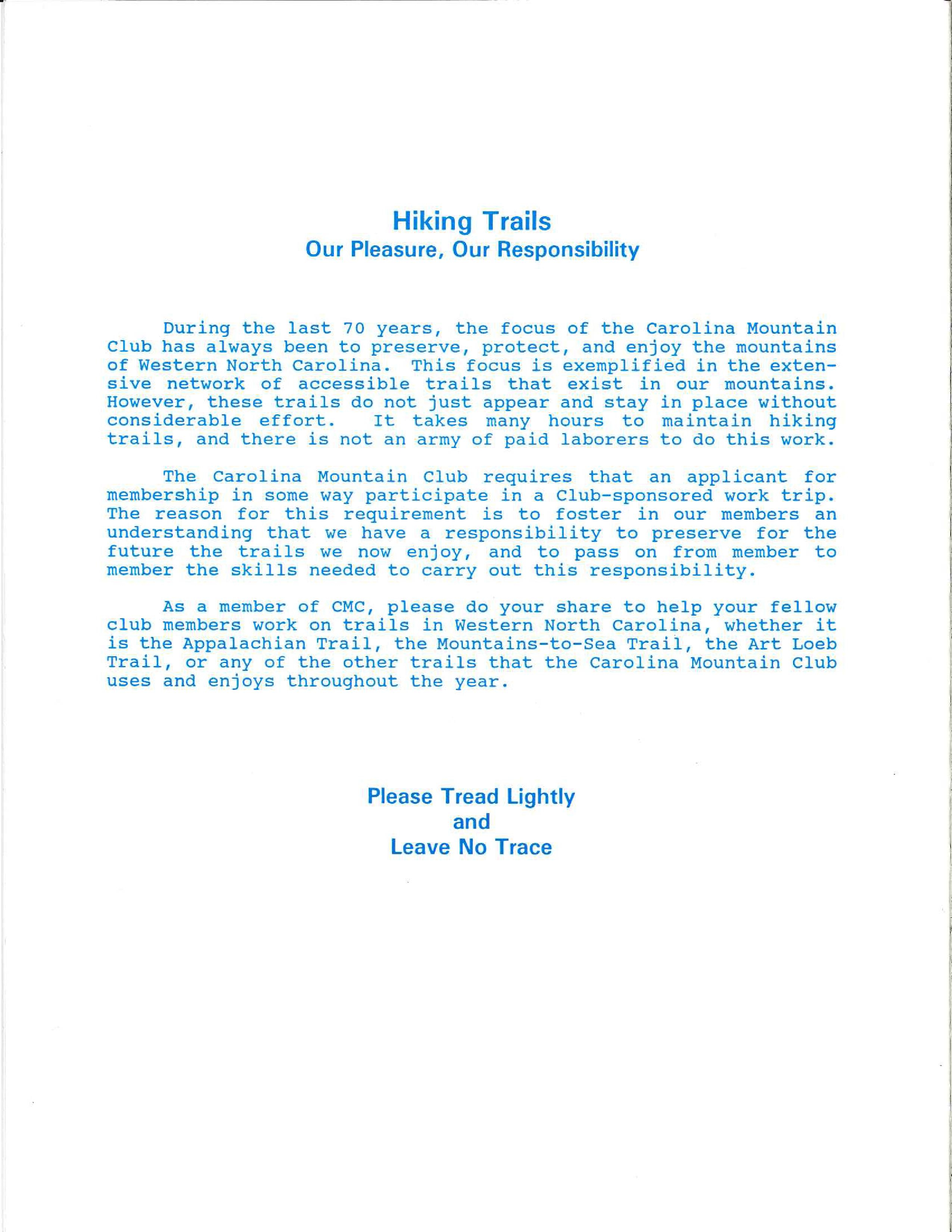In 1876 outdoor enthusiasts from all along the east coast gathered in Boston to form the Appalachian Mountain Club.1) This national club organized to guard the sanctity of the Appalachian Mountains. Disagreement immediately followed World War I, the national club split to form a Northern and Southern chapter. Despite both chapters believing in the protection of all mountains, the Appalachian Mountain Club of Boston divided. The separation was practical as it happened according to different regions along the trail. Effective protection proved absurd. How could a single national organization maintain the entire Appalachian Mountain range, and eventually the Appalachian Trail that extends from Georgia to Maine? Even after the initial split, many members in the Southern chapter dissented because the organization still did not provide enough focus on localized problems. Southern chapter dues continued to fund projects in the North. Frustrated, the members left the chapter and founded the Carolina Mountain Club on July 16th, 1923. Explained in the CMC’s first pamphlet written in the spring of 1924, the Carolina Mountain Club originally aimed to increase public interest in Western North Carolina’s wilderness and outdoor areas.2) Western North Carolina is a beautiful and ripe with many areas to camp, climb, fish and hunt. The CMC, then in its infancy, affirmed building and maintaining trails, lodges, and outdoor facilities as important projects for WNC’s forest use and protection. For example, the CMC’s first project was dedicated to establishing clubhouses to shelter hikers. Another crucial aspect to the CMC’s mission was leading hikes and tours. This is a Club tradition still upheld today as they continue to host guided hikes twice weekly.3)
“Man himself is a visitor who does not remain.”7)
References
| ↑1, ↑4 | Peter M. Steurer History of the Carolina Mountain Club: Commemorating the 70th Anniversary, 1993, 1 Carolina Mountain Club Papers, University of North Carolina Asheville Ramsey Library, Asheville, NC. |
|---|---|
| ↑2 | Carolina Mountain Club Papers, Box 15, Folder 7, 1924 University of North Carolina Asheville Ramsey Library, Asheville, NC. |
| ↑3 | Carolina Mountain Club. “Hike Schedule.” accessed April 22, 2015. http://www.carolinamountainclub.org/index.cfm/do/pages.view/id/7/page/Hike-Schedule |
| ↑5 | “List of Charter Members” Carolina Mountain Club Papers, University of North Carolina Asheville Ramsey Library, Asheville, NC. |
| ↑6, ↑7 | Chris Bolgiano, The Appalachian Forest: A Search for Roots and Renewal. Mechanicsburg, PA: Stackpole Books, 1998. |
